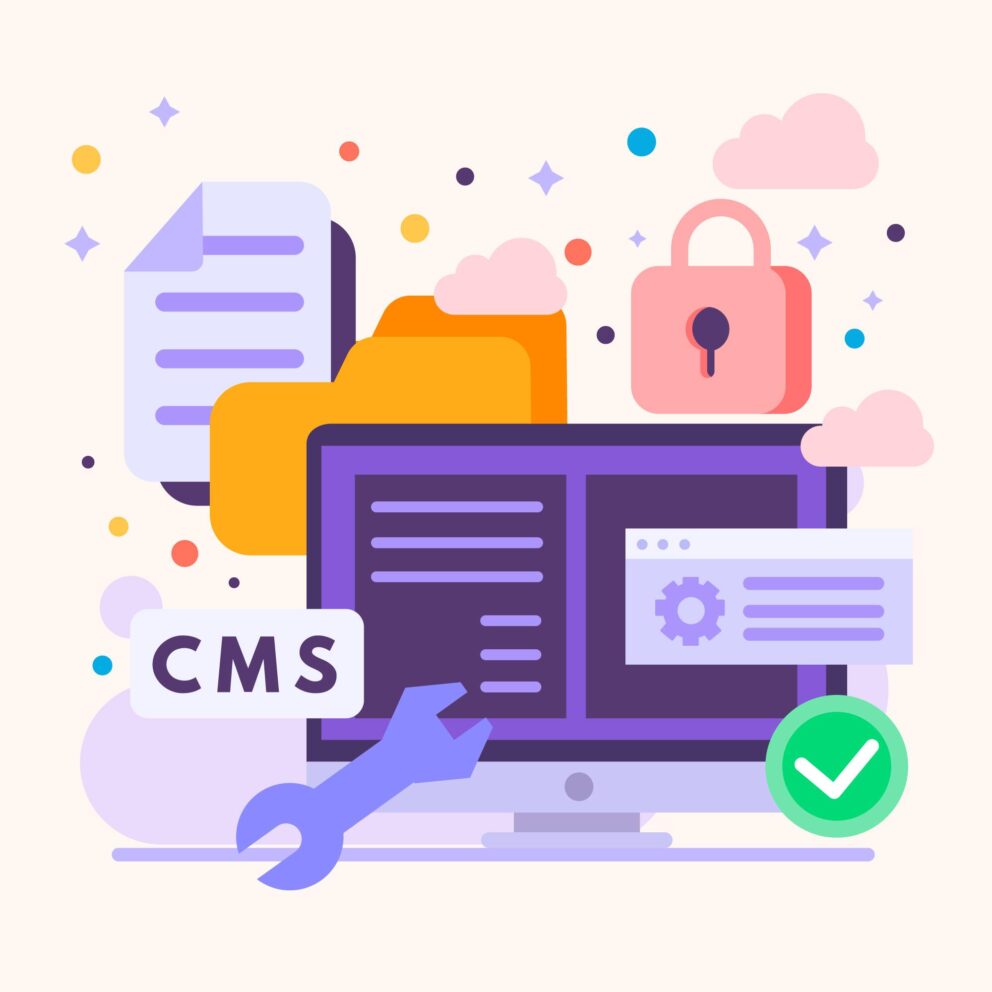Assessing Your Marketing Technology Stack

Summary
Adding to your B2B Marketing technology stack is not a strategy—tech needs to support your strategy instead.
By Lisa Heay, Director of Business Operations at Heinz Marketing
According to Scott Brinker’s most recent Marketing Technology Landscape, there are 9932 (and counting) solutions in the marketing technology space. Needless to say, it’s easy to get excited about all the new tools available, be distracted by the newest shiny object in marketing technology, or think a new tool will automatically solve a marketing problem.
But most of the time that strategy (or lack thereof) won’t work.
Our motto is always strategy first, technology second. We believe that technology needs to support your marketing strategy, not be your marketing strategy. So how do you avoid getting distracted by those 9932 tools out there and instead, get started assessing what you have and what you need to support your objectives?
Getting Started
Assuming you have a marketing strategy in place, we approach martech stack assessments with three main objectives in mind:
- What tools and technologies are being used?
- How do they support your business objectives, and
- How are they integrated?
When getting started with clients on a project like this, we’ll ask some discovery questions to get the ball rolling. Ask yourself these questions as a starting point to get a first pulse on where you stand today:
- What tools and technology solutions are you and your teams currently using?
- Are you planning to invest in new tools/tech in the near future?
- Are there any immediate needs/gaps that have been brought up?
- What tools have been the most valuable?
- Are there any gaps in data or processes that you’ve been made aware of?
- Are there any tools you’re planning to replace in the near future? Why?
- What are the most important use cases you want to cover in the next few months? One year?
- Are there any tools you feel are under-utilized?
- What training does your team need to better use the tools and tech you have available?
- How does your technology serve your strategy? Does it at all?
Now set the answers to those questions aside because once you complete your audit, some of these answers may change.
Marketing Technology Audit
The first step is to audit what technologies make up your stack. It’s easy to make a list, but the insights really emerge when you categorize them into the following groups:
- Foundation
- Optimize
- Engage
- Attention
- Identification
How are these categories defined?
Foundation
Foundational tools make up the base of your business. These tools connect to numerous other tools that are the core tools and technology to help your business operate from a marketing and sales perspective. This includes behind the scenes, day-to-day tools and technology that help the marketing and sales efforts run smoothly.
Tools that fall into this category are marketing automation tools like Marketo, HubSpot or Pardot; CRM platforms like Salesforce, NetSuite, Pipedrive, and HubSpot; website platforms like WordPress, Squarespace, or Shopify; internal communication tools like Slack, Gmail/Google Suite, Office 365, Outlook, or Microsoft Teams; customer service platforms like Zendesk; and project management like Smartsheet or Asana.
Optimize
These tools allow you to analyze data and provide insights that can be used to optimize performance of your marketing and sales efforts.
Examples include Google Analytics for website reporting and analytics; data analysis tools like Power BI, or Tableau; and specific analytics like HotJar for website heat mapping; Email on Acid for email previewing and code development; SEMRush and Moz for SEO, etc.
Engage
These tools allow prospects to engage with your business through content, ads, a sales representative, your website, etc.
Examples here include PathFactory or Uberflip for content experience management; sales automation platforms like Outreach or Salesloft; website chat bots like Drift or Olark; or a meeting tool like Chili Piper and Calendly.
Attention
These tools help you capture the attention of prospects. Think social media—paid and organic, Vidyard for interactive video creation, direct mail solutions like Sendoso or PFL, YouTube, Email Marketing, etc.
Identification
Finally Identification – these tools identify prospect accounts and targets within your target audience or ideal customer profile (ICP).
Examples here are tools that help you search for contacts, build, or append your database like ZoomInfo, LinkedIn Sales Navigator, LeadIQ, or Dun & Bradstreet. Also includes Bombora for intent data, or ABM platforms like DemandBase, Terminus, RollWorks, and 6sense.
How are you using them?
Once you have the tools listed, you’ll need to know how your team applies these tools. What are the use cases? Just because you’re paying for a tool, doesn’t mean it’s being utilized.
I suggest listing your company’s use case for each tool in your stack. This exercise can help identify potential overlap in your stack, and even identify tools that are under- or not utilized at all. There may be tools you can consolidate, or expand use to other features you’re already paying for.
Maybe your group has licenses for Zoom and WebEx, or Microsoft Teams and Slack. Both sets serve a similar function – is there room to consolidate and create extra budget for technology categories you are light on?
Moving on
Once you have your tools listed and categorized, and your use cases identified, you can start to more easily determine where you have gaps or issues in your stack.
Maybe you’re over-saturated with attention tools, but don’t have anything in place to engage with those leads.
Maybe your marketing strategy is centered around account-based marketing, but you don’t have any tools to support those efforts in your stack.
Go back to the discovery questions you asked yourself at the onset. Has anything changed after going through this exercise?
When improving your technology stack, it can be overwhelming (there are over 9900 tools, after all!). Take it one step at a time. Break your next steps out into short-term actions that should be made ASAP, long-term actions that should be made in the next year or two, and those ideas to keep on the radar for later.
Marketing Technology has come a long, long way. Just make sure that anything you bring into your organization passes the test and supports your strategy.






